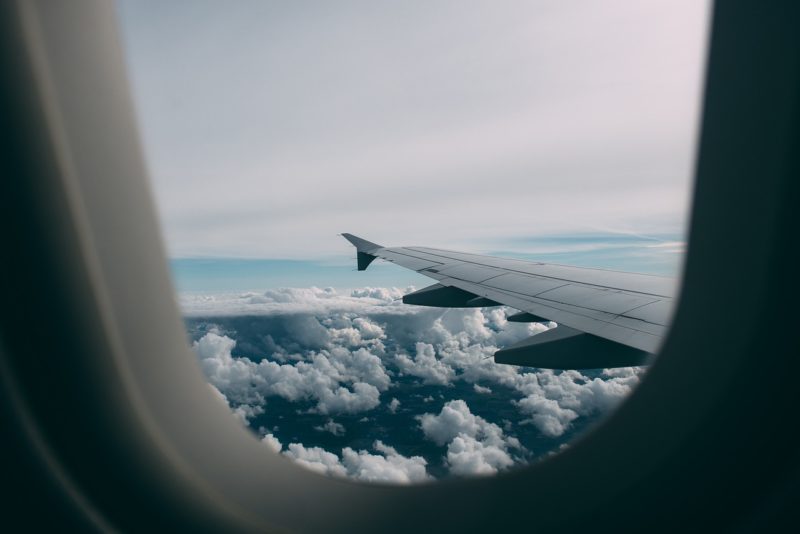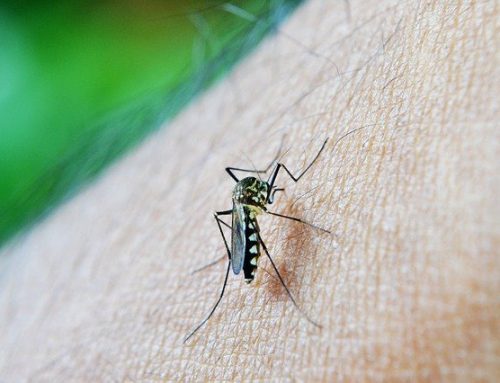Travelling by airplane is an easy, quick and painless way to get to your destination. Unless you’re traveling with a baby. Then it’s fresh hell on wheels. The first time I took my son on an airplane, he was six months old. It was a 2-hour flight from Mumbai to New Delhi, where every minute felt like several months of stress packed in tight. My kid got cranky taking off. He got hungry, restless and whiny while in the air. And then fell asleep just as we were about to land. I got off the plane beady-eyed and tired, along with a splitting headache and several new grey hair strands. I was woefully unprepared for the journey. Over time, I learned a few lessons, and I got wiser. I began to plan for my air travel with my child the way army generals prepared for war. And I also learnt the motto of mothers on planes everywhere: Always. Be. Prepared.
So here are some tricks, tips, and techniques to planning a fuss-free and easy (relatively speaking, of course!) plane journey with your little one.
When to board your baby
Whether it’s to meet extended family or attend a wedding or even take a holiday, chances are, you need to catch a flight with your baby or toddler. Most doctors recommend flying with your baby after four to six weeks, but be sure to check with yours, especially if your baby is premature or has respiratory problems.
When booking flight tickets
Most airlines allowed kids below two years old age to fly without a reserved seat, and sit in the parent’s lap instead. You are only allowed one child per lap, though. Also, the fare for the infant is significantly lower than what the adults pay.
Ready. Get set. Fly.
Here is an in-depth prep list that will help you and your baby/toddler (0-3 years) go from your doorstep to your destination with minimal fuss and stress.
At home:
- Packing is key. Make sure you carry essentials in a carry-on bag in an easy to reach manner:
- Toys/books/Whatever your child finds entertaining
- Spare clothes in case the clothes are worn to get dirty. (Remember to carry layers)
- Washcloth or napkins
- Nappies and nappy-related essentials
- Breastmilk/Water/Dry food/Cutlery that lasts the entire duration of the flight, along with extras in case of delays.
- Carry fever medicine, band-aids and other medicinal items for emergencies
- Before booking, always check with the airline as to the rules involving children:
- Do they allow you to bring your food and water
- Do they offer travel cots or bassinets (especially for long, international flights)
- Will they allow you to bring your stroller all the way to the aircraft (most airlines do, but always better to double-check)
- Do they allow carrying baby car seat/carrier as carry-on luggage
- Besides the birth certificate and passport (in case of international flights), do they need any other ID
- If flying economy, check-in early with the airline so you can get the front row which offers the most space for your baby
- You can book a spare seat and set up your car seat/carrier for your baby so that you can rest. First, check if the airline will allow this.
- Try to coincide with short flights with your baby’s nap time. For a long time, I only caught flights in the afternoon and my son would sleep through the entire journey.
- If your kid is the restless kind, choose the aisle seat so he can run up and down while you keep an eye on him
At the airport:
- Keep all relevant documents of the entire family in one secure, easy to access location in your purse/bag
- Passports (if necessary)
- Birth certificate (especially if you and your child’s last name don’t match)
- Check with airline officials if you can check-in at the less crowded, first-class counter, even if you are flying economy
- Most airlines allow young kids to move through the lines without waiting; don’t be afraid to make this request
- Many airports offer a play zone for kids, some of them are even free of charge; check with the airport officials
- Airports also provide baby strollers or carriers if you have a long waiting time or are in transit
- For long walking distance to your gate, enquire for buggy services that ferry senior citizens, disabled travellers,
- and parents with kids
- Airports are usually cold, so dress your child in layers, which can be peeled off or added, as per the requirements
- A backpack as a carry on luggage is ideal as it keeps your hands free
- If there is time, get your child to run around the airport to tire him out, and facilitate an on-air nap
- While parents with kids are allowed to board first, I rather go last. It’s best to spend as little time as possible on the aircraft.
- Avoid too many stopovers, even if it means a cheaper airfare. If there is a long stopover, consider staying overnight in an airport hotel, so your child feels rested.
On the plane:
- Offer breastmilk or water in a sipper cup during take-off and landing. The swallowing action helps ease the ear pressure discomfort that commonly happens in a pressurised airplane. Alternatively, let your baby suck on your fingers or a teether.
- Soft singing or rocking might help soothe a baby cranky due to the restrictive seating
- Most babies do get sleepy with the motion of the airplane so try to rock her to sleep if that helps
- If the baby continues to be restless/cranky, stand up & hold her once the seatbelt sign is off or walk up and down the aisle
- Pack your child’s favourite toys/colouring books/storybook as babies get bored and need entertainment
- Some airlines offer a play kit for kids … ask your flight attendant
- Some airlines offer pre-booked food for infants and children, but be warned: infant meals can often be unpalatable mush*
- In a long flight with an alert/cranky baby, consider breaking your no-screen rule and offer an iPad or the inflight children’s entertainment for some time, maybe 30 minutes, if you feel you are losing your peace of mind
*My one-year-old daughter refused to touch her meal and ate off my husband’s food tray instead. Check this post for easy travel food options for babies and kids.
Conclusion
You may just be one of the lucky few whose baby is well behaved and calm on a flight. Or you might be like the rest of us, who have to plan, organise and strategise every step of our journey on air. It’s always best to be prepared. For as I’ve noticed, no two flights are ever alike. And you can always depend on your child to be unpredictable. With the right amount of preparation, you can avoid any unpleasant surprises and arrive at your destination in one piece.
Do you have a tip on how to handle a baby/toddler during a flight? Talk to us in the comment section.






Leave A Comment